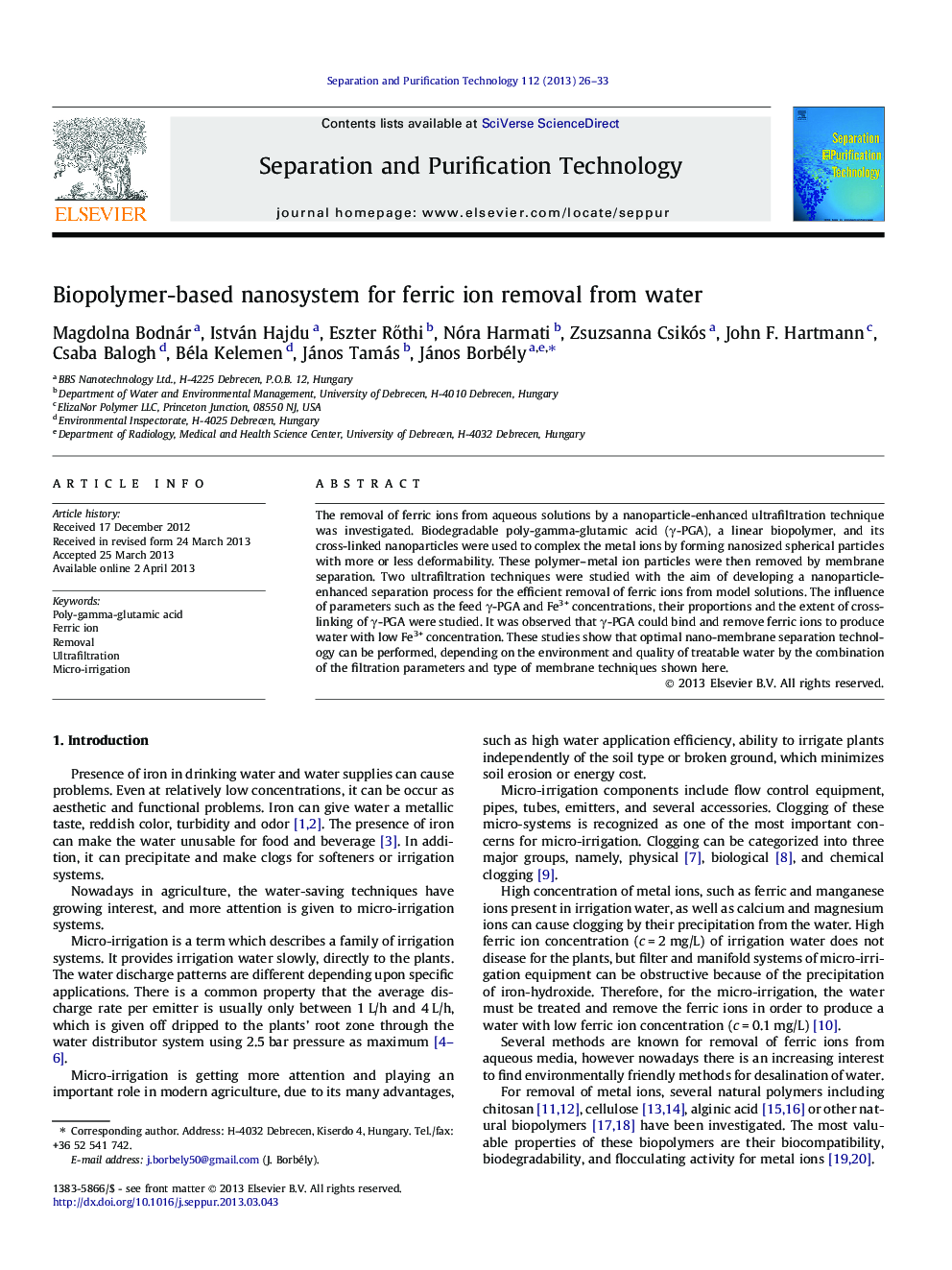| کد مقاله | کد نشریه | سال انتشار | مقاله انگلیسی | نسخه تمام متن |
|---|---|---|---|---|
| 641620 | 1457007 | 2013 | 8 صفحه PDF | دانلود رایگان |

• We examine the removal of Fe3+by nanoparticle enhanced ultrafiltration technique.
• Biodegradable linear and cross-linked g-PGA were used to form nanosized particles.
• Spherical g-PGA–Fe3+ nanoparticles with low clogging properties were formed.
• Two ultrafiltration techniques were compared for Fe3+ removal by biopolymer.
• Optimal nano-membrane separation technology can be elaborated.
The removal of ferric ions from aqueous solutions by a nanoparticle-enhanced ultrafiltration technique was investigated. Biodegradable poly-gamma-glutamic acid (γ-PGA), a linear biopolymer, and its cross-linked nanoparticles were used to complex the metal ions by forming nanosized spherical particles with more or less deformability. These polymer–metal ion particles were then removed by membrane separation. Two ultrafiltration techniques were studied with the aim of developing a nanoparticle-enhanced separation process for the efficient removal of ferric ions from model solutions. The influence of parameters such as the feed γ-PGA and Fe3+ concentrations, their proportions and the extent of cross-linking of γ-PGA were studied. It was observed that γ-PGA could bind and remove ferric ions to produce water with low Fe3+ concentration. These studies show that optimal nano-membrane separation technology can be performed, depending on the environment and quality of treatable water by the combination of the filtration parameters and type of membrane techniques shown here.
Figure optionsDownload as PowerPoint slide
Journal: Separation and Purification Technology - Volume 112, 10 July 2013, Pages 26–33